Paid Media
Updates by Casey Anderson
A Sign of the Times?
In April, the Chinese online shopping giant Temu cut its paid advertising in the US. It would seem that the anticipation of tariffs is the primary reason for suspending ad budgets in the US market. It has also scaled back spend in Meta, so if you are a Temu shopper, expect to be retargeted less frequently in your feed.
Though the potential of tariffs driving down US trade and imports is likely, the flip side of this is that Temu’s absence from auctions leaves space for other brands to compete in the market. We’ll take it while it lasts.
Consent Mode, Activated
Microsoft is advising advertisers turn on user consent signals, with May 5 being the deadline to not impact EU performance. In this step toward ensuring greater user privacy and local compliance, Microsoft will be enforcing the strict provision through Consent Mode.
“Consent Mode works by adjusting the tracking behavior on Microsoft’s tag code based on a parameter called ad_storage. This parameter controls whether ads can store cookies on a user’s device. The setting can be either “granted” (allowing cookies for advertising) or “denied” (blocking cookies). Setting this parameter enables you to share user consent signals with Microsoft.”
The bottom line is that maximizing ad performance and reporting will rely on the implementation of Consent Mode across accounts. If a user gives you consent, you’ll have full tracking permissions, if not, some insights will be dimmed.
PMax and YouTube Evolving
Last month we talked about upcoming changes to PMax campaigns with channel segmentation and the future of channel-level reporting. That future is now starting to rollout among advertisers! PMax is also implementing new retention goals as a way to bid more on lapsed customers and improve their lifetime value.
YouTube is expanding ads as well with Shorts now supporting horizontal ads and Demand Gen getting more YouTube features.
With the success we’ve seen with PMax, Demand Gen and Shorts, we’re excited to level up advertising in those areas.
SEO
Updates by Brett Woodward and Randy McFadden
YouTube Testing AI Overview
YouTube is testing adding an AI Overview for select YouTube premium members. The AI Overview will feature a carousel of clips related to the user’s search query, and is primarily intended to help with product research, along with travel/local discoveries. Whether this experience will improve channels being discovered is yet to be determined.
AI Drives Comparatively Little Traffic, But Has Other Beneficial Influences
AI drove only 0.1% of the referral traffic for a group of 35,000 websites according to a study conducted by Ahrefs, a SEO and marketing software leader. Traditional search engines drove almost 44% by comparison, followed by direct traffic at 42.3%, social (13%), paid (0.3%), and email (0.2%).
Yes, it’s true that for all the excitement around LLMs they don’t actually send all that much measurable traffic to websites. But before you write off AI’s impact on marketing, it’s important to remember that we can’t measure everything.
We can’t, for example, accurately measure influencing factors behind branded searches. Why did a user search for a brand? Sure, a lot of that traffic comes from users who are just looking for a brand they already know about, but how many of those searches are people searching for a brand for the first time? Did they see a compelling social post or YouTube video last week that sparked their interest? Did they read a product review a month ago that stuck in their mind? Was it the consistent display ads they’ve been seeing? Did they see the brand mentioned in a few different ChatGPT responses? We can’t know for sure.
At the end of the day AI might be a small driver of traffic right now, but it’s growing and it’s certainly not going anywhere. We advise keeping tabs on its progress and see it for what it is, a great way to gain brand awareness.
AI Overviews Shown To Reduce Clicks by 34.5%
Despite Google consistently saying that AI Overviews (AIOs) drive more traffic to websites, that’s not what many sites (if not most) are reporting. In another analysis by Ahrefs, data from 300,000 keywords showed that the top ranked organic web pages experienced a 34.5% drop in click through rates when AIOs were present. That number seems to be widely affirmed by SEOs (including us) regarding the sites they manage.
But what about those links inside the AI Overviews that point to webpages? Surely those links would make up for it to some degree, right? That’s what I was asking myself at least. Then I remembered an instance where a client’s site ranks #1 organically and has the first AIO featured site link for a query that has an average of 12,000 monthly searches.
The result? In the last 3 months (Feb, Mar, & April), click through rate was down 56.1% YoY and clicks were down 63.4%. Seeing as AOIs are supposedly included in Google Search Console data (although not able to be separated from traditional search clicks/impressions), this was disappointing to see, but not surprising. It’s obviously just one instance and context always matters, but it did add some color to the Ahrefs study and the complaints from SEOs everywhere.
And there’s more!
Our updates from the world of marketing analytics is over on this month’s Analytics Roundup, written by Two Octobers’ Head of Analytics Nico Brooks.
Get Our Best Updates, Straight to Your Inbox
Sign up for our newsletter to get our latest updates and advice on using analytics to improve your digital marketing outcomes.




